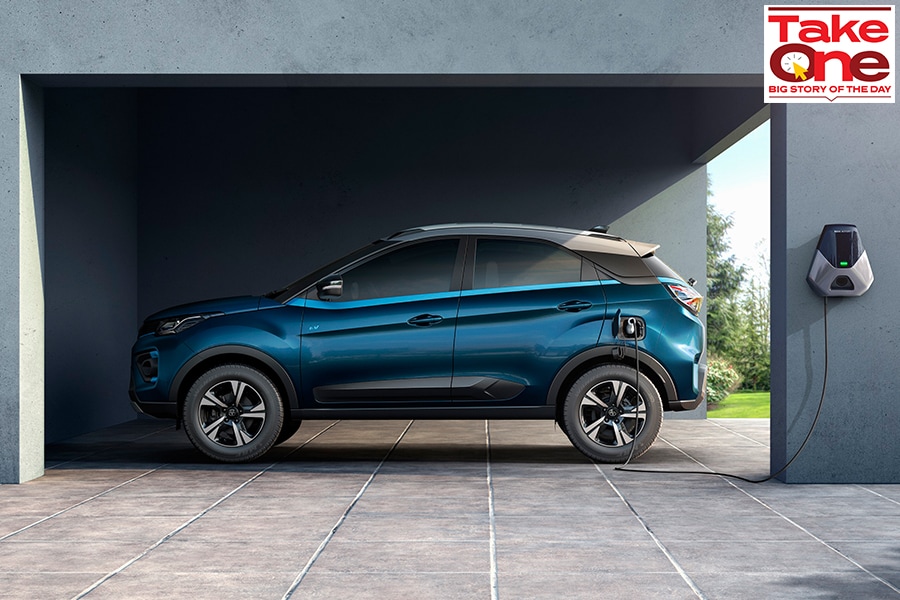
Is the new Nexon EV Max the game changer that Tata Motors needs to fuel India's EV transformation?
India's third-largest carmaker commands 96 percent of the country's electric car market. With its first-mover advantage, it is only likely to benefit once the momentum gathers pace and investments pour in
 The Nexon Max EV boasts an ARAI range of 437 km, almost 120 km more than the electric Nexon currently on sale
The Nexon Max EV boasts an ARAI range of 437 km, almost 120 km more than the electric Nexon currently on sale
It’s now safe to assume that Tata Motors holds a distinct advantage in India’s electric vehicle (EV) transformation journey.
Much of that, of course, is thanks to the Nexon EV launched in 2020, which has gone on to become a runaway success with sales of nearly 20,000 units so far. The Nexon EV is based on the Nexon SUV, once built as a bridge product to keep the automakers' coffers flowing when it transitioned its entire vehicle platforms on two new architectures as part of the automaker’s restructuring after a decade of turmoil.
Today, Tata Motors is India’s third-largest carmaker, with a market share of nearly 14 percent, and is closely on the tail of India’s second-largest carmaker, Hyundai Motors. More importantly, the success of the EV has meant that the company commands a staggering 96 percent of India’s electric car market.
Of course, EVs are in their infancy in India, and lag markets like China and the US, as domestic sales fare pale in comparison to what carmakers sell on the internal combustion engine (ICE) platforms. The EV sector penetration in the country currently stands at around one percent and that’s particularly why Tata, with its first-mover advantage, is only likely to benefit once the transformation gathers pace, pushed by private and public investments into the sector.
That’s precisely why, on May 11, a week after the company showcased its third-generation electric concept vehicle, Avinya, which could have a range in excess of 500 km and is envisioned as a global product that can rival even Tesla, Tata decided to bring in its latest offering, the long-range Nexon EV, that the automaker reckons will allay range fears.








